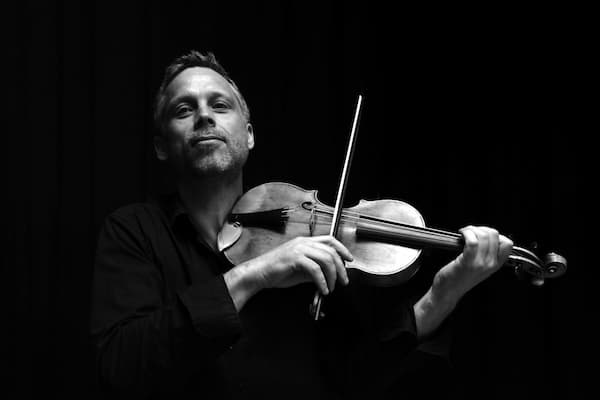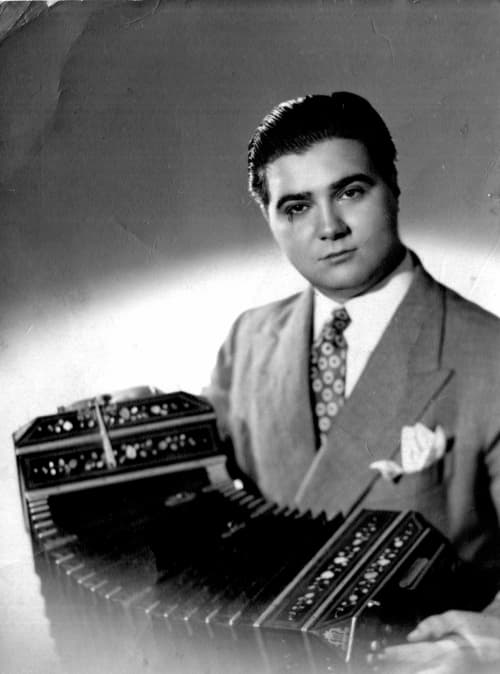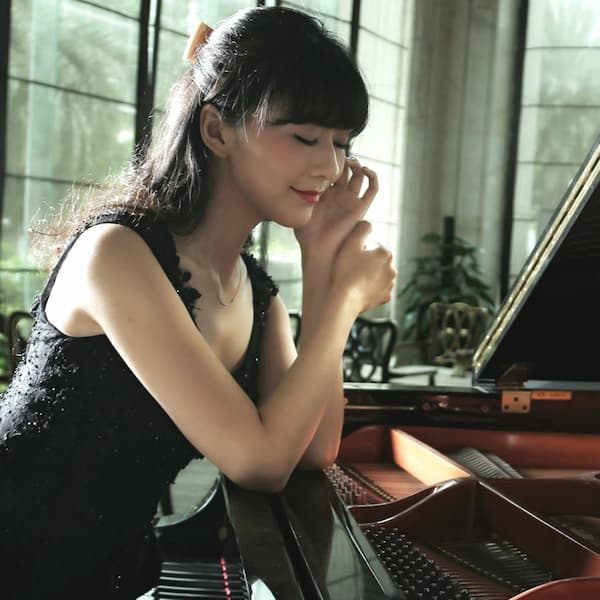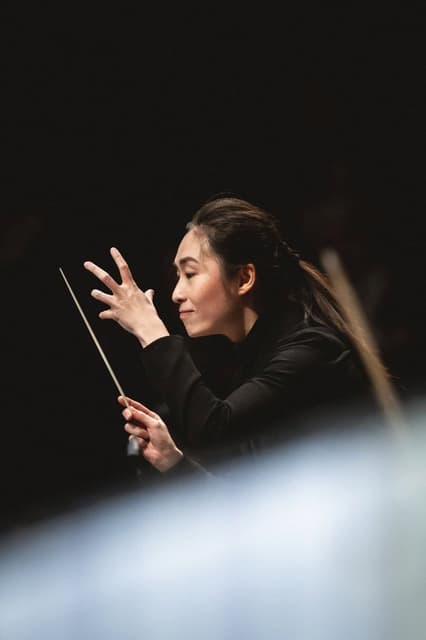
http://static1.squarespace.com/
How did you decide to be a piano duo instead of individual pianists?
EJR: It happened out of sheer serendipity! Both of us entered Juilliard as solo pianists, and neither of us had entertained the idea of forming a piano duo until we decided to play together for fun (and for chamber music credit). However, from the moment we started to work together, we were delighted to discover that a rare, powerful, and joyous artistic chemistry between us, and thus our piano duo was born! Duo playing compels us to connect to each other in a way that is intensely collaborative, much like a lively dance or conversation. It’s a complex and fascinating dynamic in which we can explore the convergence of our ideas as well as the collision of our contrasting personalities. We also enjoy playing around with the many aspects of interpersonal interaction through our music: in performance, we can be romantic, combative, or comedic.
GA: In the end, our friendship is the foundation of our duo: from the laughter and the meals (we love to eat!) to the delirious plane rides and the shared adventures. I’m so lucky to share my career with such a good friend.
Do you find that you have to make your own opportunities or can you still be part of the “orchestral concerto” circuit?
EJR: Both—we certainly enjoy performing the staples of the duo concerto repertoire (i.e. the two-piano concerti by Mozart, Poulenc, et al), but we have also created new concerto repertoire for the piano duo genre, including an arrangement of the Brahms’ powerful Double Concerto and a dazzling fantasy based on Saint-Saëns’ Danse Macabre. In creating these new pieces, we believe that two pianos with orchestra is an inherently exciting and epic dynamic, and the genre deserves repertoire that underscores this grandeur. Our Brahms concerto arrangement pays homage to the compositional textures of his superlative solo piano concerti (after all, Brahms himself had a penchant for piano duet/duo transcriptions) while also capitalizing on the equality of two pianos (as opposed to the more disparate timbres of violin and cello). Our Danse Macabre: Bacchanal for Two Pianos and Orchestra takes Saint-Saëns’ beloved tune as a point of departure, spinning off into wild and virtuosic territory. And of course, we do love the incredible solo concerto repertoire, which we individually perform as well.
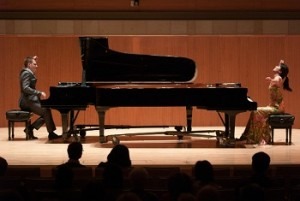
Credit: https://a248.e.akamai.net/
GA: While most of our performances feature music from the standard two-piano repertoire, we also include music of our own creation, usually fantastical and surprising arrangements of classical and popular music. These arrangements arose out of necessity, often because the music we wanted didn’t exist.
In the case of one-piano, four-hand music, the repertoire tends to skew toward the precious; it frequently evokes beginner pianists (often young siblings) playing music in a living room. We found very little music that suited the virtuoso needs of the grand concert stage, and so we began creating our own, exploiting the dramatic and choreographic potential of the genre.
But perhaps more importantly, we needed repertoire that was relevant and fresh to our audiences. In the early 1800s, Franz Liszt would riff spectacularly on whatever dance forms reigned the ballroom floors, and he would concoct wild fantasies using his audiences’ favorite opera melodies (the audience would often hum along as he played!). Likewise, we hope to do the same in 2016, performing stylized and avant-garde arrangements of our audiences’ favorite melodies (such as themes from Star Wars) and dance hits (by Daft Punk, Michael Jackson, etc.). In the end, we hope to challenge our listeners to contemplate and probe the music of our own day, and in doing so, also reconsider the music of the past.
STAR WARS – the “Force Theme” recast in a minimalist haze
Does creating your amazing music videos makes rethink your approaches to the music versus a standard concert setting? How long does these videos take to conceive and put together?
GA: We create our videos with the unique venue of “YouTube” or “Facebook” in mind. Without the focused environment of the concert hall, straightforward performances seem to disappoint on YouTube. The stuff that fills the YouTube computer screen—the related videos, comments, advertisements, logos, and view counts (not to mention all the other distractions in one’s home)—are too much to allow for nuanced music listening! With this in mind, we created our music videos to withstand the challenges of the chaotic online viewing platform.
EJR: From the very start, these videos have been self-produced. When we first had the idea to make music videos we didn’t have the funds to hire a professional film crew, so we thought: let’s go ahead and make videos on our own! In creating these music videos, we jointly contribute to the vision/concept, narrative, production, direction, and filming (occasionally having a friend help us out with the camera if necessary), then Greg assembles and color grades the footage. We refine and finalize the video together.
GA: Whether performing onstage or making videos, we always ask ourselves, “How can we make the music come alive?” and “How we make the music relevant to our listeners?” Bringing music to life involves far more than just “playing the piano.” Many external forces affect our perception of music, from our listeners’ emotional state to the venue in which we are performing. With this in mind, we do our best to align these external forces in our favor. Sometimes this means we choose to burn pianos in our music videos, wear provocative clothing onstage, compose fiery arrangements of pop music, or otherwise spice up the music listening experience. But in the end, everything we do as artists is in service of the music and our audience’s reaction to it.
What do you think a duo piano version of a work offers that a two-hand version cannot?
GA: Sure, there are some compositions and arrangements for two pianos that can be just as effective when performed on a single piano, but we would never consider programming those pieces! When arranging for two pianos, we must find a way to justify the existence of two pianos, so that two pianos feel essential to the successful performance of the piece. Often we do this by maximizing the musical dialogue in the music. This “conversation” between pianists yields added drama and affords us opportunities to take on theatrical roles. In other instances, we simply relish the epic nature of performing on two 9-foot Steinway pianos — such glory!
EJR: Having played a work like Ravel’s La Valse in both versions, I can safely say that a duo piano version can expand the sonic, technical, and even expressive capabilities of the work. An additional pianist certainly lends another layer of complexity and richness to the musical fabric. We’ve discovered that the integration of two minds, twenty fingers, and distinct approaches can lead to heightened colour and vibrancy in the interpretation of a work.

Credit: https://i.ytimg.com/
EJR: To honor the centenary of Igor Stravinsky’s Rite of Spring, we decided to undertake a project befitting the scope, significance, and audacity of this masterpiece. Stravinsky’s ballet radically transformed the face of twentieth-century culture with its savage sounds and controversial narrative depicting a pagan tribe’s ritualistic sacrifice of a young virgin. Having performed this seminal work dozens of time in concert, we wanted to go beyond live performance and create something lasting and elemental; this resulted in a cinematic project devoted to the entire 35-minute composition.
Part music video, part tale of soul-searching and survival, The Rite of Spring: A Musical Odyssey is a boundary-breaking film that culminates in the sacrificial destruction of a piano. The film weaves together a ferocious dueling piano performance of Stravinsky’s composition with a narrative of existential awakening. Starting from traditional concert trappings, the protagonists are gradually sucked into a ritualistic spiral among dancers, insects, and hallucinatory worlds until they are faced with a naked reckoning in the ocean and an ancient piano ablaze in the desert. Filled with imagery representing fear, ritual and renewal, this film examines the connection between the outside world and the inner life of the protagonists, as they seek to shed their exterior identities, merge with nature, and uncover their true selves.
We were involved in every aspect of this ambitious project: its conception, direction, performance, filming, editing, production (on a shoestring budget, no less). The extensive shoot certainly posed many complexities and challenges (Greg even lost his toenail while filming with a piano in the ocean!), but we were sustained throughout the process by our passionate mission to honor the power of Stravinsky’s watershed creation.
THE RITE OF SPRING : Introduction to Part I
We’ve seen that Elizabeth’s album of the Field nocturnes is out – does Greg also have solo projects?
GA: Yes, in addition to occasional solo and chamber appearances, I released my second solo album last year. The album features a contrast of heaven and hell: Bach’s Fifth French Suite and Rachmaninoff’s Piano Sonata No. 1 in D minor.
Liz’s new album is something special—I really enjoyed hearing her so effectively perform music of such a dreamy and tender nature, especially in contrast to the more overtly intense music we perform as a duo.
EJR: And Greg’s album is a powerhouse and poignant depiction of both the divine and infernal! Although our duo touring and projects have occupied the bulk of our time in recent years, we remain committed to undertaking our own solo and chamber music pursuits largely because we’re passionate about the extraordinary repertoire in these genres. We believe that these individual projects enhance our duo partnership and keep us artistically alert, challenged, and inspired.
Can you tell us about what you do in your off hours?
GA: It’s getting harder and harder to juggle it all. In addition to practicing, travel, and personal life, there is also composing new music, editing and preparing music for publishing, filming and editing music videos, updating websites, writing (a seemingly endless inbox of) emails, etc.; in the end, I’m thinking music even during the “off hours!” One of my favorite non-musical activities is inventing cocktail recipes—I’m an amateur mixologist of sorts—but true to my “can’t stop the music” mentality, I’ve begun designing cocktails to pair with particular pieces of music. You can even find some of the “musical mixology” recipes on our duo website, andersonroe.com.
EJR: We spend so much time on the road, so “off hours” can be elusive (even when we’re not performing, there is a multitude of artistic projects that keep us busy, not to mention the infinite stream of emails!). That said, these are some of my favorite things: spending time with friends and family; eating, cooking, trying new restaurants; museum-hopping and sightseeing (if I’m traveling); listening to all types of music, attending concerts, singing (karaoke is a guilty pleasure!); reading, writing, catching up on my favorite TV shows, drawing, meditation. Still, as Greg said, anyone involved an artistic discipline knows that the creative process is ongoing, even in so-called leisure time—we’re constantly synthesizing our experiences, observations, and imaginings, inevitably channeling them through our work and art.
~~~~
So, no matter where you catch up with Anderson & Roe, do catch up with them because you’ll be seeing one of the most innovative and dynamic piano duos on the stage today. Not content with the repertoire they’ve inherited, they’ve made important contributions to the duo piano repertoire of the future. Check out their website <http://www.andersonroe.com> for concert listings, music videos (Bernstein’s Mambo from West Side Story and their frightening and pulsatingly dark version of Schubert’s Der Erlkönig, as well as a bit of Taylor Swift’s Shake it Off).
“A Kiss?!” / MOZART / Cosi
Anderson & Roe will be performing in Hong Kong on June 18th 2016

